Iceland’s Ring Road is a breathtakingly beautiful journey that spans over 800 miles, circling the entire island. It’s a route that will take you through a diverse landscape of glaciers, waterfalls, volcanoes, hot springs, and rugged coastlines.
There are plenty of ways to explore the Ring Road, but one of the most popular and immersive ways is by traveling in a campervan. With the flexibility of having your own transportation and accommodation, you can truly immerse yourself in the stunning scenery and take your time to explore all the hidden gems that Iceland has to offer.
In this 8-day travel itinerary, I’ll guide you through some of the must-see spots along the Ring Road, along with some insider tips on how to make the most out of your campervan journey. Whether you’re a nature lover, adventurer, or just looking for a unique and unforgettable experience, this Ring Road itinerary will not disappoint. So buckle up, and get ready for the road trip of a lifetime!
Trevorocity is reader-supported. When you buy through links on this site, we may earn an affiliate commission.
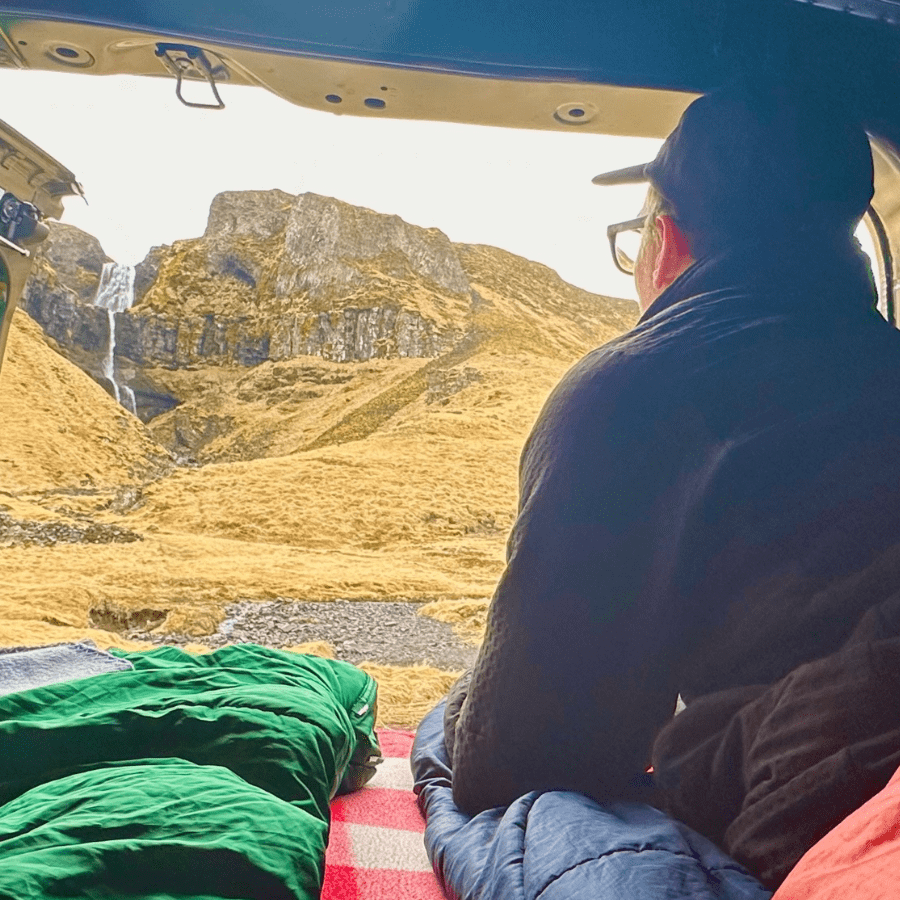
The Best Place to Rent a Campervan in Iceland
Choosing the correct campervan is important for your trip to Iceland, as this will be your home while traveling. There are many different companies that you are able to rent campervans from. I would highly suggest getting insurance for your vehicle (especially gravel protection!) as this could save you money in the long run.
Below are just a few different companies that are reliable for renting a campervan. During my most recent trip to Iceland I tried out Cheap Campervans (owned by Happy Campers) and had a great time as well. A friend of mine used Go Campers and had really good success as well.
Camp Easy
Camp Easy is a family-owned campervan rental company that has been operating in Iceland for over a decade. They offer a range of vehicles, from two-person vans to larger family-sized campers, all equipped with basic camping gear like a stove, fridge, and kitchen utensils. They also offer add-ons like GPS, Wi-Fi, and camping chairs for an additional fee.
Camp Easy’s prices start at around 14,900 ISK (around $118 USD) per day for a two-person van in the low season, and go up to around 22,900 ISK (around $181 USD) per day for a larger family-sized camper in the high season. They also offer a range of insurance options to ensure that you have peace of mind while driving around Iceland’s rugged terrain.
Happy Campers
Happy Campers is a popular campervan rental company in Iceland, known for their bright and colorful vans. They offer a variety of campervan models, ranging from small two-person vans to larger family-sized vans.
Their prices start at around 14,000 ISK (around $110 USD) per day for a two-person van in the low season, and go up to around 24,000 ISK (around $190 USD) per day for a larger family-sized van in the high season. They also offer extras like Wi-Fi, camping chairs, and gas stoves for an additional fee.
GoCampers
Go Campers is a well-known campervan rental company in Iceland that offers budget-friendly options. They provide a wide range of vehicles, from small two-person vans to larger family-sized vans. One of the things that sets them apart from other rental companies is their commitment to eco-friendliness. They have a policy of planting one tree for every rental, which means that renting with them can help offset your carbon footprint.
In addition to their affordable prices, Go Campers also offers extras like Wi-Fi, GPS, and camping equipment for an additional fee. Their prices start at around 9,500 ISK (around $75 USD) per day for a two-person van in the low season, and go up to around 16,000 ISK (around $126 USD) per day for a larger family-sized van in the high season. They also offer a range of insurance options to ensure that you have peace of mind while driving around Iceland’s rugged terrain.
Campervan Iceland
Campervan Iceland is another popular rental company, with a wide variety of campervans to choose from. They offer everything from basic two-person vans to luxury four-person vans with built-in bathrooms. Their prices start at around 13,500 ISK (around $106 USD) per day for a two-person van in the low season, and go up to around 36,000 ISK (around $284 USD) per day for a luxury four-person van in the high season. They also offer extras like Wi-Fi, GPS, and camping equipment for an additional fee.
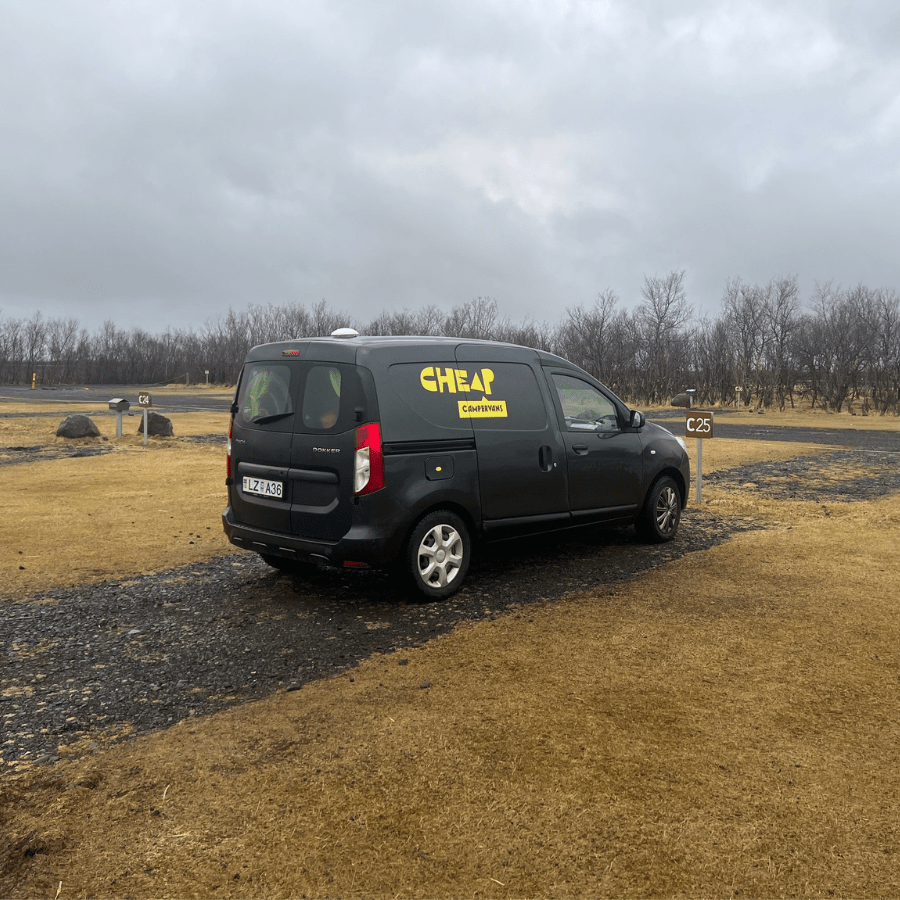
The Best Time to Drive on the Ring Road in Iceland
Iceland’s Ring Road is a stunning drive that offers breathtaking views of the country’s unique landscapes. Whether you’re driving in winter or summer, the Ring Road has plenty of sights to see and adventures. But which season is the best for driving the Ring Road?
Driving the Ring Road in Summer
Summer is the most popular time to drive the Ring Road, and for good reason. The days are long, with up to 24 hours of daylight in some parts of Iceland, giving you plenty of time to explore. The weather is generally mild, with temperatures averaging around 50°F (10°C) and minimal precipitation. This means you can take advantage of all the outdoor activities Iceland has to offer, such as hiking, glacier walks, and boat tours.
During the summer, the Ring Road is also easier to navigate. Most of the roads are open, and the weather conditions are generally good. This makes it easier to drive and enjoy the stunning scenery without worrying about snow, ice, or road closures. It’s also the busiest time of year, so you’ll have plenty of opportunities to meet other travelers and share experiences.
Driving the Ring Road in Summer
Driving the Ring Road in winter can be challenging, but it’s also an unforgettable experience. The landscapes are transformed into a winter wonderland, with snow-covered mountains and icy waterfalls. You’ll also have a better chance of seeing the Northern Lights, which are visible from September through April.
However, winter driving conditions can be hazardous. The roads can be icy and snow-covered, and visibility can be poor due to fog and snowstorms. It’s important to have experience driving in winter conditions and to be prepared with the right equipment, such as studded tires or snow chains. Many attractions and campsites are also closed during the winter season, so you’ll need to plan your route carefully.
One advantage of driving the Ring Road in winter is that it’s much quieter. You’ll have more solitude and a chance to enjoy the natural beauty of Iceland without the crowds. And if you’re up for some adventure, you can even try your hand at ice climbing, snowmobiling, or skiing.
The decision to drive the Ring Road in summer or winter ultimately depends on your preferences and priorities. The following itinerary is built on a spring/summer season as activities and road conditions may not be the same in the winter.
Must have Apps and Websites for Driving Iceland's Ring Road
Airlo
Airlo is a great e-sim application that will allow you to have data while traveling around the country! It cost me about $15 USD for 3GB which was enough to navigate my 8 days around the country.
SafeTravel
This app gives you notifications of road conditions in Iceland and which ones are open and which ones are closed.
Vedur.is
Best for weather around Iceland, much more reliable than any other phone because it is taking precise measurements (although Iceland weather changes every 5 minutes it seems).
Aurora
Great for notifications about the chances of seeing northern lights, it can even send you push notifications if they are visible.

8 Day Camping Ring Road Itinerary
Day 1
The first day in Iceland is going to be filled to the brim, but it is worth it. Most flights from the United States landed in the early morning. Upon arrival most campervan companies offer a shuttle from KEF to their location. It took us almost an hour to get our van picked up, so plan some time!
The majority of the first day will be items that are in the “golden circle”, this is probably the day that you will have to deal with the most tourists.
Thingvellir National Park
Thingvellir National Park is a stunning UNESCO World Heritage Site that is situated on the North American and Eurasian tectonic plates. Visitors can actually see the two tectonic plates pulling apart.
While not included on this itinerary there is also the chance to snorkel and scuba between these two tectonic plates. You will most likely see a handful of people in wetsuits during your visit.
While in the park, one thing that you must check out are Öxarárfoss waterfall and the Silfra fissure. Both of these sites are just a few minutes walk from the parking lot (remember to pay for parking as there are cameras that record license plates).
Bruarfoss (optional)
Bruarfoss is a picturesque waterfall that is known for its vivid blue waters, which are caused by the glacial meltwater that flows through the Hvítá River. This is listed as an optional visit because it is a 4 mile round trip hike. If you aren’t feeling up for it then you can pass on this one as you will see plenty of other waterfalls on your trip around the ring road
Strokkur
Strokkur is a famous geyser located in the geothermal area of Haukadalur. What makes this a great stop is that the geyser erupts every 5-10 minutes and shoots boiling water up to 120 feet in the area. Additionally there are other small geysers in the area that you can take a look at.
This is also a great place to stop for lunch, however if you didn’t get any food at the airport you might be in for some sticker shock on prices on a meal. Eating out in Iceland is expensive, so just something to prepare for.
Gullfoss
Also known as the “Golden Waterfall”, is one of Iceland’s most iconic and visited waterfalls. It cascades down in two tiers, creating a stunning spectacle. Visitors can walk along the edge of the falls or take a closer look from a nearby observation deck.
Reykjadalur Hot Springs (optional)
Also known as “Steam Valley”, is a popular geothermal area located near the town of Hveragerði in Iceland. It is renowned for its natural hot springs, which offer visitors a unique opportunity to bathe in geothermally heated waters.
Again, this is listed as an optional visit due to the 2.5 mile (one way) hike to get to the springs. Once you are there though it feels so good to relax and hang out before heading to camp for the night.
Camping Night One
The first campground of the trip will be located in Selfoss at Gesthus. This campground is located pretty close to a small town, so it is a great opportunity to stop at a grocery store like Bonus to pick up supplies for breakfast, lunch and dinners.
In the rate of the campground it includes Wi-Fi, showers, and a cooking area. Laundry and dryers are available for an extra charge. The Wi-Fi was strong enough to reach the campground which was quite nice.
Day 2
Today is going to be the day of waterfalls, while you’ll see plenty of waterfalls throughout the rest of the trip there are 5 on the list to visit today.
Seljalandsfoss
The waterfall drops 120 feet into a serene pool below and is surrounded by lush greenery. What makes Seljalandsfoss unique is that visitors can actually walk behind the falls and see the water cascading down from a completely different perspective. I highly recommend visiting this waterfall before 9:00 am to avoid the tourist buses.
Gljufrabui
Hidden away in a narrow canyon just a short walk from Seljalandsfoss, one of Iceland’s most famous waterfalls, is the lesser-known but equally beautiful Gljufrabui. This waterfall is tucked away in a small cave, and while it may be easy to miss, it is definitely worth seeking out.
Once inside the canyon, visitors will see a small stream flowing down from the cliffs above. Follow the stream into the narrow gap in the rocks, and you’ll find yourself standing in front of the stunning Gljufrabui. Water cascades down from the cliffs above, creating a mesmerizing display of mist and light. The cave itself is also beautiful, with moss-covered walls and a peaceful atmosphere. With both of these waterfalls don’t forget to pay for parking.
P.S – the hot chocolate sold at the food stand is amazing!
Skógafoss
The waterfall drops an impressive 120 feet from a cliff and spans a width of 75 feet, creating a thunderous display of mist and spray. Visitors can walk right up to the falls and feel the power of the water as it crashes down into the river below.
If you are comfortable climbing some steps there is a great view point at the top where you can overlook the valley. There are additional hiking trails at the top that you can take.
Skógafoss is also steeped in local legend, with stories of hidden treasure and supernatural creatures said to live in and around the falls.
Kvernufoss
Just a short 5 minute drive from Skógafoss is another hidden gem waterfall, that is usually much quieter. While hiking here we only ran into other groups. It is a short and relatively flat 20 minute walk to reach the rolling green hills with a 90 foot waterfall cascading down a cliff into a small pool.
You can also go and hike behind this waterfall, but be prepared to get wet! The parking fee does include bathrooms located at the Museum.
Dyrhólaey
The name Dyrhólaey translates to “door hole island,” which is fitting as the headland has a large natural arch that serves as a gateway to the sea.
While we visited it was quite foggy, so the view was not as great as on a clear day. However on a clear day panoramic views from the top of the headland are simply breathtaking. Visitors can see sweeping views of the surrounding black sand beaches, the North Atlantic Ocean, and the nearby Mýrdalsjökull glacier.
Reynisfjara Beach
Reynisfjara Beach is a stunning black sand beach. The beach is famous for its dramatic black sand, towering basalt columns, and breathtaking views of the North Atlantic Ocean.
One of the most striking features of the beach is the Reynisdrangar sea stacks that rise out of the sea just off the coast. Legend has it that these stacks were once trolls who were caught in the sunlight and turned to stone.
It is important to be aware of the powerful waves and strong currents, as these can be dangerous. There is a light system before you get close to the water that shows the “danger” level for the day.
Foss á Síðu
The last waterfall of the day and the last stop of the day is Foss á Síðu, a large 90 foot waterfall. This waterfall is located on private land and is not always open. However, when it is closed you can still get a good viewpoint at the gate.
Camping Night Two
Night 2 camping will take place at Skaftafell National Park Campground, honestly probably one of the nicest campsites I stayed at during my trip in Iceland. The campground is open year round, however the hours change for payment so make sure to check the website.
There is a nice shower house with plenty of showers and hot water. The campground does have a laundry unit that is FREE! However, there is only one unit so it might be hard to find an opening. We found good luck first thing in the morning. Additionally there is Wi-Fi near the shower house and laundry. Sadly, there is not a kitchen house here to use.
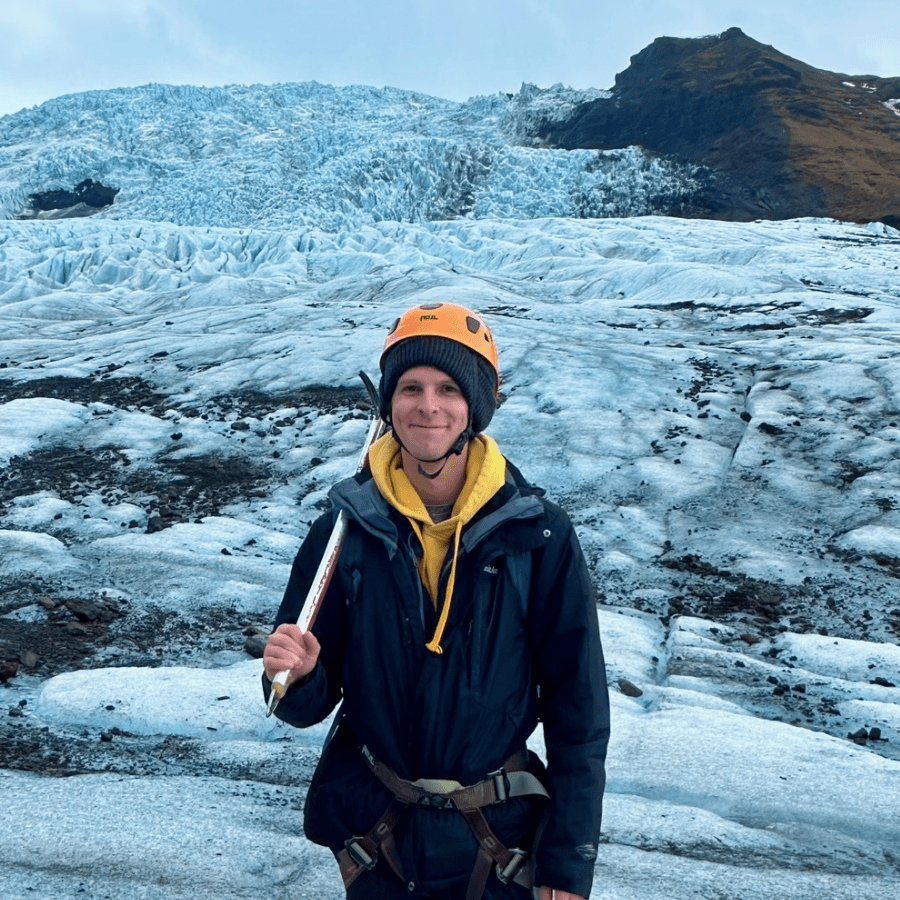
Day 3
Day three of our Ring Road Itinerary is not going to be as busy as far as the amount of places we are going to visit, but that is for good reason as we have a longer activity ahead of us! The main reason that Skaftafell was chosen for the camping location is that we are going to go glacier hiking!
Skaftafell Glacier Hike
The Skaftafell Glacier Hike is a thrilling adventure that takes you on a guided tour of the stunning glaciers in Skaftafell National Park. With an experienced guide leading the way, you’ll strap on your crampons and traverse the icy terrain, exploring deep crevasses, sparkling blue ice formations, and awe-inspiring ice caves.
While there are many different tour companies and options I suggest booking the 5-hour excursion. This will really give you enough time to explore the glacier, and see unique areas that most people do not get to visit. The best part about hiking the glacier? The guides don’t have a set route and use their experience to traverse different areas daily.
Diamond Beach
Diamond Beach is a very Instagram famous beach on Ring Road. The icebergs, which have broken off from the nearby Jökulsárlón glacier lagoon, come in all shapes and sizes and are strewn across the beach in a beautiful and otherworldly display. Some are as small as pebbles, while others tower over visitors like giant crystal sculptures.
In my opinion this site was a little over hyped from videos and pictures. While there were plenty of ice shards it just did not look the same, however I think it is still worth the visit since it is right off the main road.
Jökulsárlón Glacier Lagoon
Just a short walk away from Diamond Beach is Jökulsárlón Glacier Lagoon. As you approach the lagoon, you’ll be struck by the surreal and ethereal quality of the landscape. Icebergs of all shapes and sizes float serenely in the water, each one a unique work of art carved by the forces of nature. Some are pure white, while others are tinted a deep, mesmerizing blue.
The lagoon is also home to a seal colony! They can be seen swimming around the area and hanging out on the icebergs.
Camping Night Three
The third night of camping will be spent at Fossardalur Campsite. This campsite might seem a bit out of the way, but it is a nice peaceful oasis. There were only 2 other campers visiting while we were there. It is important to note that this campsite is open from April to October with exact dates changing every season.
There are two nice bathrooms that have plenty of hot water for showers, a nice kitchen area, and Wi-Fi. The host is also really nice and likes to interact with all of the campers and can help provide additional tips if you need it.
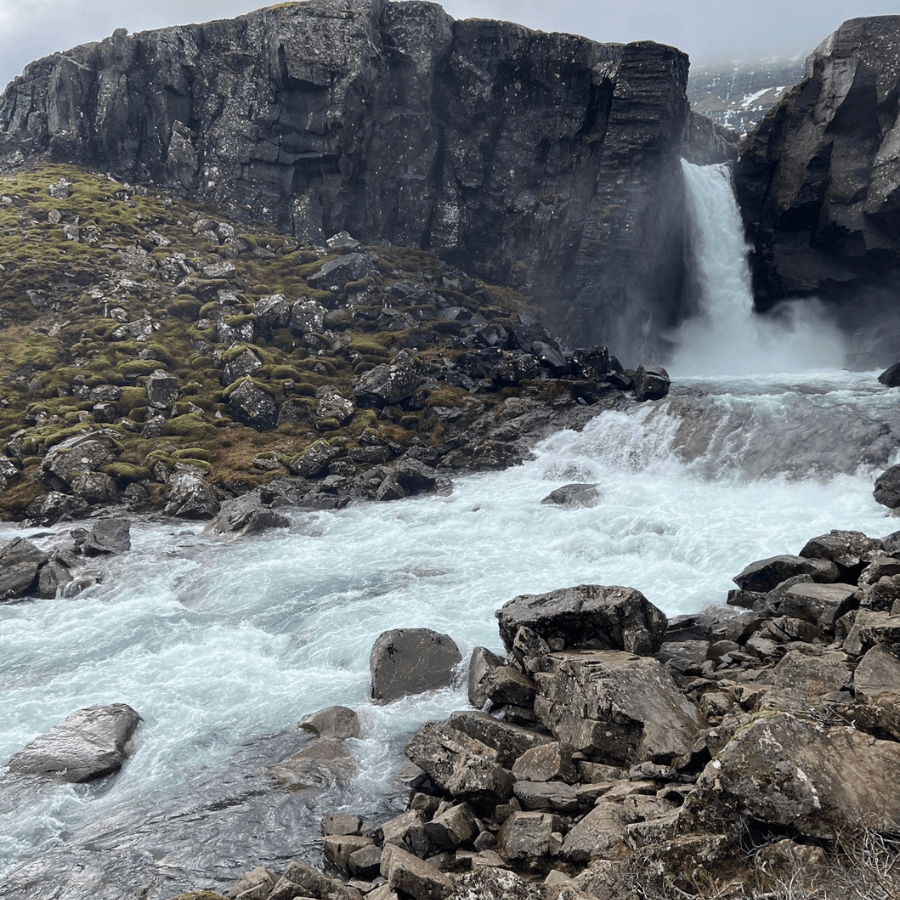
Day 4
Day four is another busy day filled with a lot of sights and activities. This will be one of the longer drive days, so be prepared.
Sveinsstekksfoss
Located just about 5 minutes away from Fossardalur Campsite is Sveinsstekksfoss, a waterfall that cascades over a series of rocky ledges into a tranquil pool below. Most visitors will just go to the viewpoint and not notice the trail next to it.
The trail has a small gate that almost looks like a trash can (we had to do a double take on our trip) that takes you to the top of the waterfall. This by no means is a difficult walk/hike, just about 5 minutes. Trains aren’t really maintained, so they can be slippery from time to time.
Folaldafoss
It is time to take a break from Road 1 and venture a little bit more off into the country (although no F-roads are crossed). The waterfall is nestled amidst rolling hills and verdant meadows, creating a peaceful and idyllic setting that’s perfect for a leisurely hike or a picnic.
One of the unique features of Folaldafoss is the fact that it’s situated in a narrow gorge, which gives the waterfall a sense of intimacy and seclusion.Similar to Sveinsstekksfoss most just visit the viewpoint, but you need to have some adventure. You can follow the small river down to the base of the waterfall and really see all of its glory.
Jökulsá á Dal
It is time to drive a bit to Jökulsá á Dal and while this is just a viewpoint it is a nice area to stretch your legs. The canyon has unique colors with running water between it. This was one of the best areas where we stopped for lunch and just relaxed for a bit.
Dettifoss
Another waterfall… shocking! But honestly, all the waterfalls on this itinerary have something unique about them and Dettifoss is no different. Dettifoss is one of the largest waterfalls in all of Europe. The waterfall drops a staggering 135 feet over a rocky ledge, sending a plume of mist high into the air and creating a thunderous roar that can be hear for miles around. The river below, Jökulsá á Fjöllum, is also a sight to behold, with its fast-flowing waters carving their way through the rugged volcanic landscape.
Ásbyrgi
Ásbyrgi is located in the very north of Iceland and is a gorgeous canyon that is unique and there is nothing else like it in Iceland. Within the national park Hljóðaklettar is a must see. Hljóðaklettar is a collection of unique basalt formations that create an otherworldly landscape of columns and caves.
Additionally this is one of the few places in Iceland where you are able to see a forest full of green trees.
Camping Night Four
Night four will be spent camping pretty far north in Iceland at Camping 66.12° north. Located right on the sea this is a great place to spend the night, and if you are coming in shoulder season you might be in luck. There is a chance that you might be able to see the northern lights!
The campsite has a very nice bathroom with showers that have plenty of hot water. The north can be notoriously windy so the indoor kitchen is a great feature. The only downside is that there is no Wi-Fi, but shouldn’t we be disconnecting anyway on a trip like this?
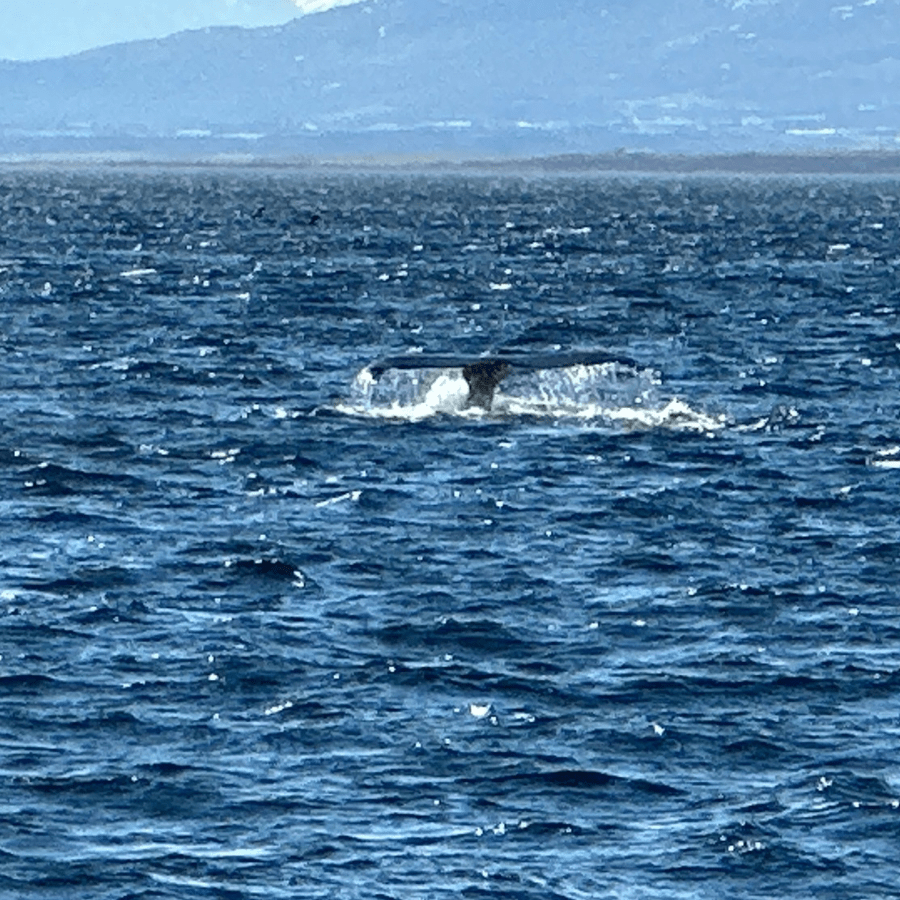
Day 5
Day five on the Ring Road itinerary is yet another long drive day, but today with fewer activities (sadly). This will help make sure that you are able to see the western part of Iceland.
Whale Watching
Start the day by heading down to the town of Husavik to catch a whale watching tour. The most common type of whales that are seen are humpback, but there are also orcas and other whales. While not guaranteed to see a whale this is a great tour to embark on. If you want to see puffins as well there are combination puffin and whale tours.
Myvatn Geothermal Area
From Husavik we are going to head to the Myvatn Geothermal Area. In this area you can find boiling mud pots and steaming fumaroles. You will know you have reached the area by the smell, rotten eggs. It takes some time to adjust.
This is also a great time to visit the Myvatn Natural Baths to relax from the previous day’s activities. Unlike other natural baths this is located in the far north region with a lot less tourists, so it is less crowded.
Camping Night Five
One thing that I have learned about the west side of Iceland is that campsites are just not as great (or at least ones that are open year round). For night five plan at camping at Camping Dalakot. While it is not really near any points of interest it is a great stop over for the night.
The campsite has showers, electricity and a small cooking area. Laundry is available at an additional charge. Makes for an easy overnight stay.
Day 6
It is time to head to the western part of Iceland and explore all it has to offer. Today will be a full day of adventuring so get ready.
Kirkjufellsfoss
The day will start with a visit to a waterfall. The waterfall cascades down a series of rocky steps and creates a beautiful mist that fills the air. If you are a Game of Thrones fan this is a stop for you. This is one of the most photographed areas in all of Iceland.
Snæfellsjökull National Park
This beautiful park is famous for its majestic Snæfellsjökull glacier, which towers over the surrounding landscape and dominates the skyline.
The park is home to a diverse range of natural features and ecosystems, including lava fields, black sand beaches, rugged coastlines, and lush forests. While the next few stops will be in the National Park, the visitor center is a great place to stop to learn some of the history of the park.
Saxhóll Volcano Crater
The Saxhóll Volcano Crater is an impressive landmark that rises to a height of 109 meters above sea level. Visitors can climb to the top of the crater to enjoy breathtaking views of the surrounding landscape. It includes vast lava fields, rugged coastlines, and distant mountains.
The walk to the top is relatively easy climbing up a metal staircase. Over the last few years this staircase has actually won 3 different architectural awards. Windy days can make the climb a bit more difficult as there is not much of a handrail.
Djúpalónssandur
Djúpalónssandur is a beautiful black sand beach famous for its stunning natural beauty and rich history. The beach is also home to a series of rusted shipwrecks, remnants of a bygone era when the coast was a treacherous place for sailors.
One of the highlights of Djúpalónssandur is the famous “lifting stones,” a set of four large rocks that were use in the past to test the strength of Icelandic fishermen. Visitors can try their luck at lifting the stones, which range in weight from 23 kg to 154 kg, and see if they have what it takes to be a true Icelandic fisherman (I did not…).
Arnarstapi
Arnarstapi is a small coastal village located on the Snæfellsnes peninsula in western Iceland. This picturesque village is famous for its stunning natural beauty, with rugged cliffs, black sand beaches, and dramatic sea stacks providing a dramatic backdrop to the quaint houses and colorful fishing boats.
This is also a great place to stop to have lunch.
Búðakirkja
Búðakirkja is a small black wooden church located on the Snaefellsnes peninsula in western Iceland. The church, which dates back to the 19th century, is one of the most photographed landmarks in Iceland, thanks in part to its striking black color and isolated location.
This is probably one of the most photographed pictures of Iceland, and it is worth a short little stop. There isn’t much else in the area so I would plan no more than 10-15 minutes here.
Búðakirkja
The beach is known for its golden sand (this is a rare occurrence in Iceland), rocky shoreline, and crystal-clear waters. Which are home to a variety of marine life, including seals.
Visitors to Ytri Tunga Beach can observe the seals basking in the sun on the rocks, playing in the water, and swimming along the shoreline. The beach is also a great spot for bird watching. With a variety of sea birds nesting in the surrounding cliffs.
The best time to see the seals is during low tide, however one thing I did not expect was how slippery it would be to get out to the end. To get to the end you will have to walk across a walk and seaweed. I may have taken a few tumbles along the way, but it was worth it to see about a dozen seals.
Camping Night Six
It is time to slowly make our way back to Reykjavik so plan on camping at Fossatún Campground. This campsite is located just about 2 hours outside of the city, but has great amenities. There are showers, Wi-Fi and hot tubs that are fill up with water from nearby hot springs. Sadly the kitchen room is not include for guests who are camping.
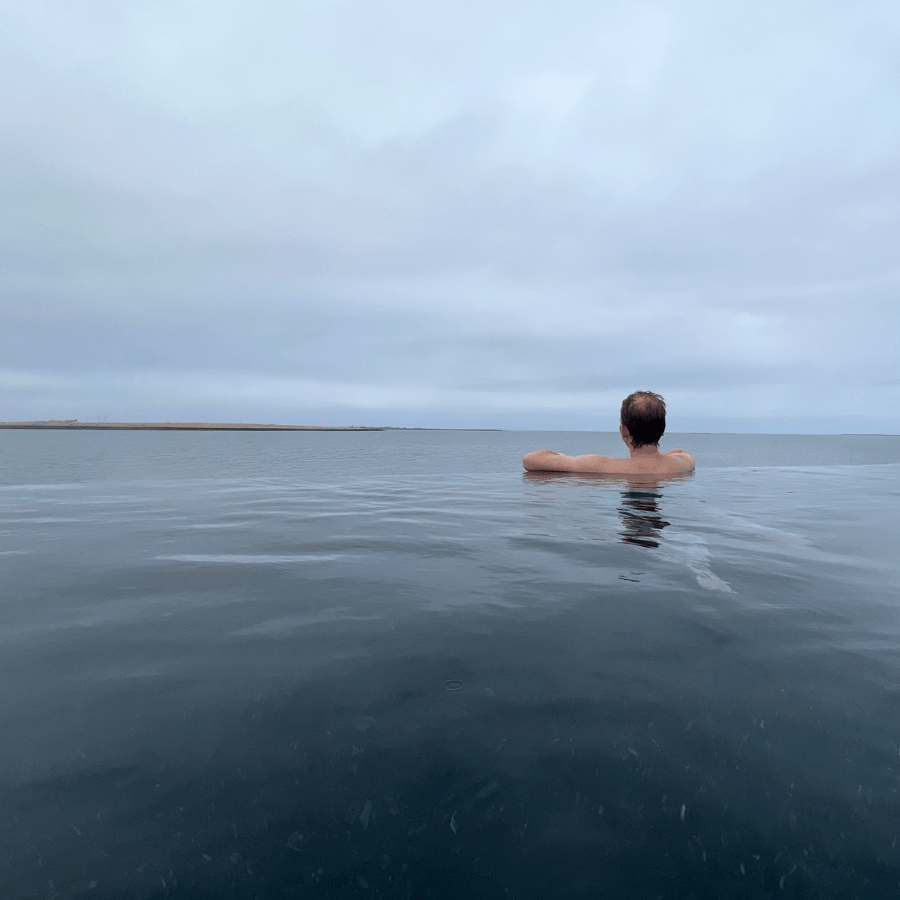
Day 7
It is the last full day in Iceland, but there is still plenty to do.
Glymur Waterfall
The hike to the waterfall is a beautiful, moderate-level trail that winds through lush forests and along a river. The highlight of the hike is crossing a thrilling footbridge over a dramatic gorge, where visitors can witness the powerful force of the waterfall from a unique vantage point. At over 190 meters tall, Glymur waterfall is a truly awe-inspiring sight to behold
Sky Lagoon
I am going to get a lot of flack over this one, but choose Sky Lagoon over Blue Lagoon. Although Blue Lagoon is not bad, Sky Lagoon offers a more relaxing experience with less tourists visiting.
Sky Lagoon is an area to relax after the previous week of exploring through mountains and hiking glaciers. The 7 step ritual will help you take any soreness away that you might have and fully immerse yourself in meditation.
Visit Reykjavik
Time to explore the capital city of Iceland, Reykjavik. There is so much to do here from art displays, to restaurants and even museums. If you want a more detailed guide to Reykjavik, read my Top 10 things to do in Reykjavik blog post.
Camping Night Seven
While camping is possible in Reykjavik, I highly recommend staying in the city to really get the full experience. There are plenty of hotels, hostels, and airbnbs to choose from. If you are set on camping, I would highly recommend Reykjavik Campground.
If you are looking for a luxury experience I highly suggest The Reykjavik Edition. I was able to book this hotel with Marriott points to stay at the only 5 star hotel currently in Iceland.
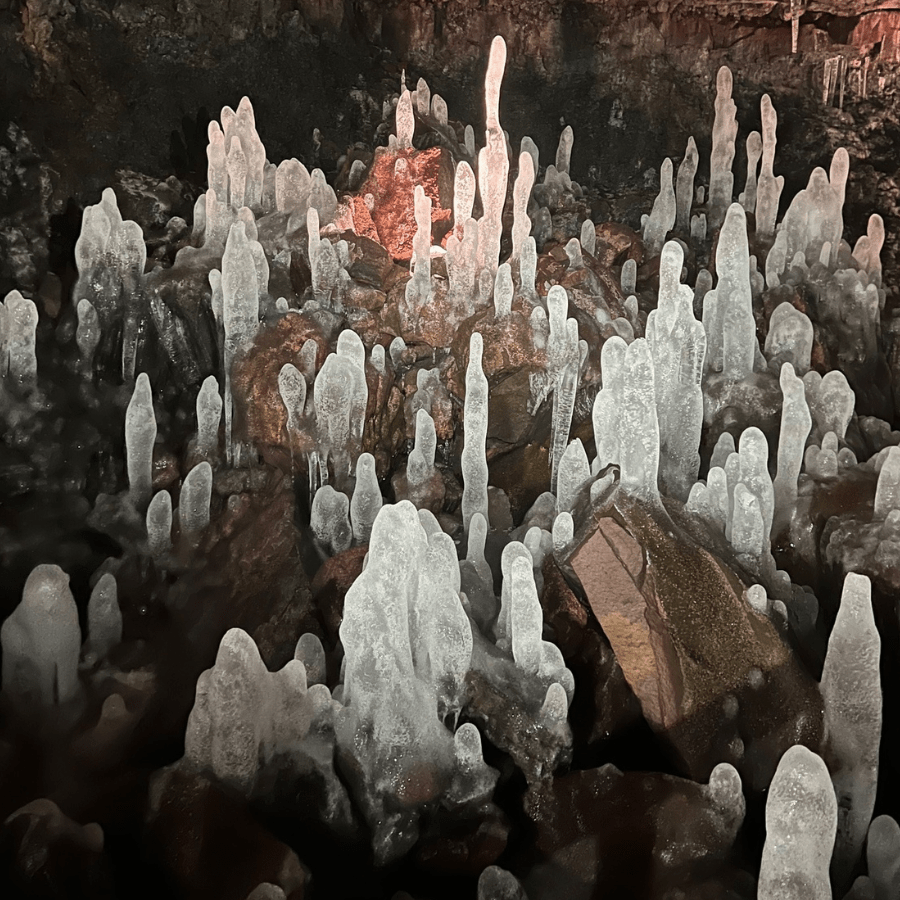
Day 8
It is the final day in Iceland, this ring road itinerary is based on a late afternoon departure flight. Most flights to the United States are at this time.
Lava Tunnel
While the Lava Tunnel is a little bit touristy it is a great place to visit and learn the history of how lava caves form. You also get the chance to walk in a tunnel that was once filled with molten lava! To make the itinerary work as best as possible take the earliest tour (9AM).
Fagradalsfjall
This active volcano recently erupted in March 2021. Making it a must-visit destination for any traveler looking to witness the raw power of nature.
The hike up Fagradalsfjall is a relatively easy one, taking approximately 1-2 hours round trip. The trail takes you through a stunning lava field before reaching the summit, where you’ll be recognize with an incredible view of the surrounding landscape and the constantly erupting volcano.
Departure
It is sadly time to start packing up. Plan on leaving time to have an inspection done to your campervan. Most companies have a shuttle that will take you to the airport, check with them when you pick up your vehicle.
We planned to take a 2:00 PM shuttle and arrived at 1:30 PM with no issues in drop off. All of us had a cracked windshield, but thank goodness for gravel insurance! We headed to the airport and were there by 2:15 PM and through security by 2:45 PM for our 4:45 PM flight.
Conclusion
An 8-day camping trip through Iceland’s Ring Road is an adventure that will leave you with memories to last a lifetime. From the dramatic waterfalls and geysers of the Golden Circle to the otherworldly landscapes of Myvatn and Vatnajökull National Parks, Iceland’s natural wonders are truly breathtaking.
Traveling by campervan offers the flexibility to explore at your own pace and enjoy the stunning landscapes around you. Whether you’re hiking to hidden waterfalls, soaking in hot springs, or spotting wildlife on the coast, Iceland’s beauty is truly unparalleled. A camping trip on the Ring Road is a chance to connect with nature and experience the magic of Iceland up close, making it an adventure not to be miss out.


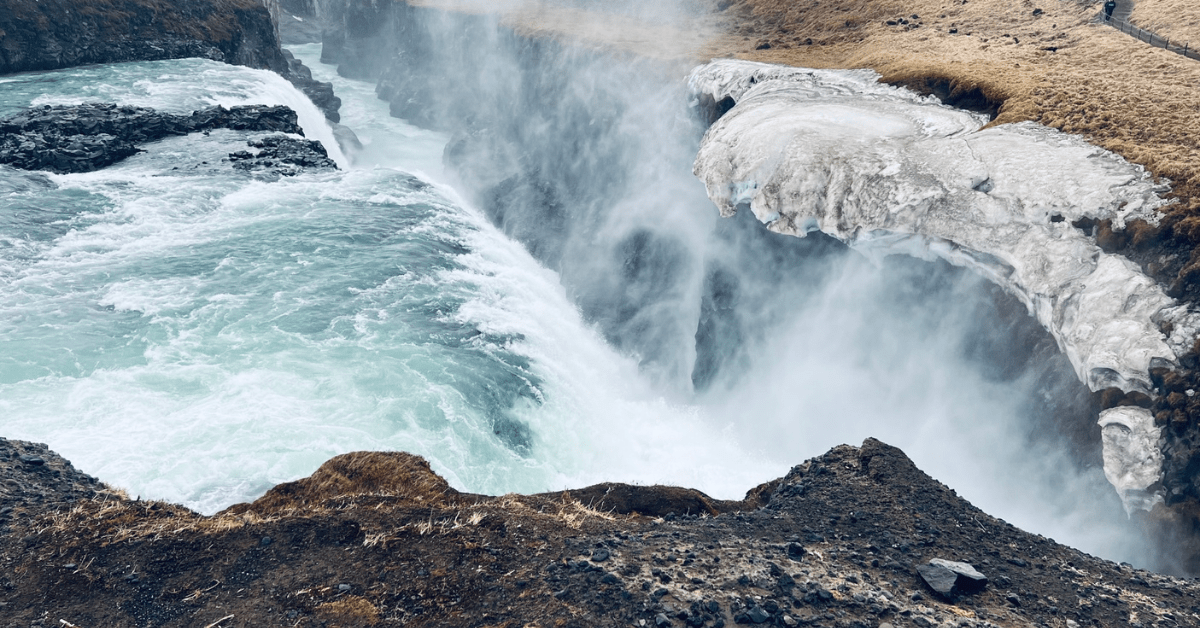
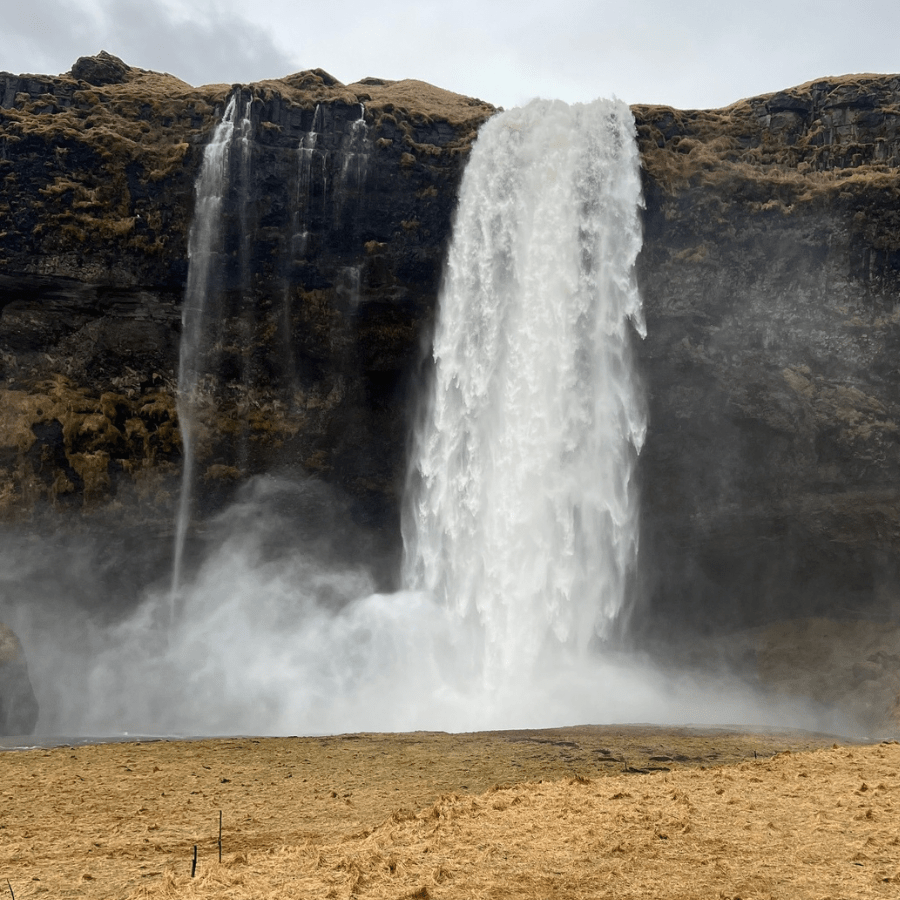
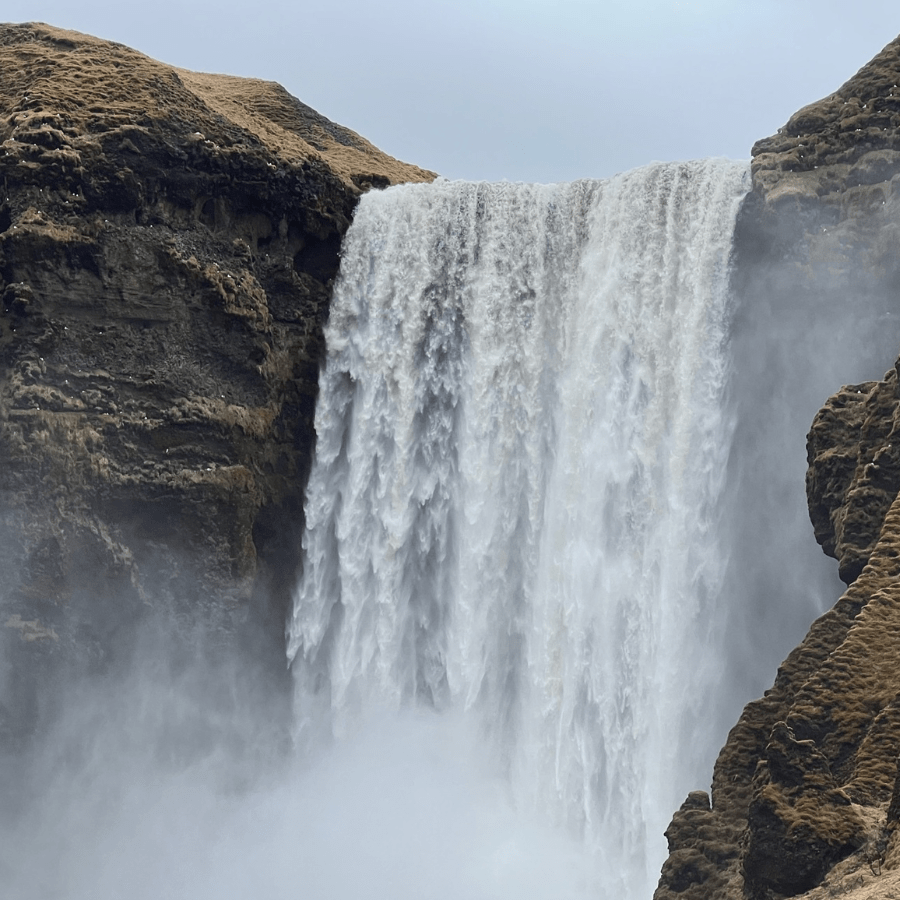
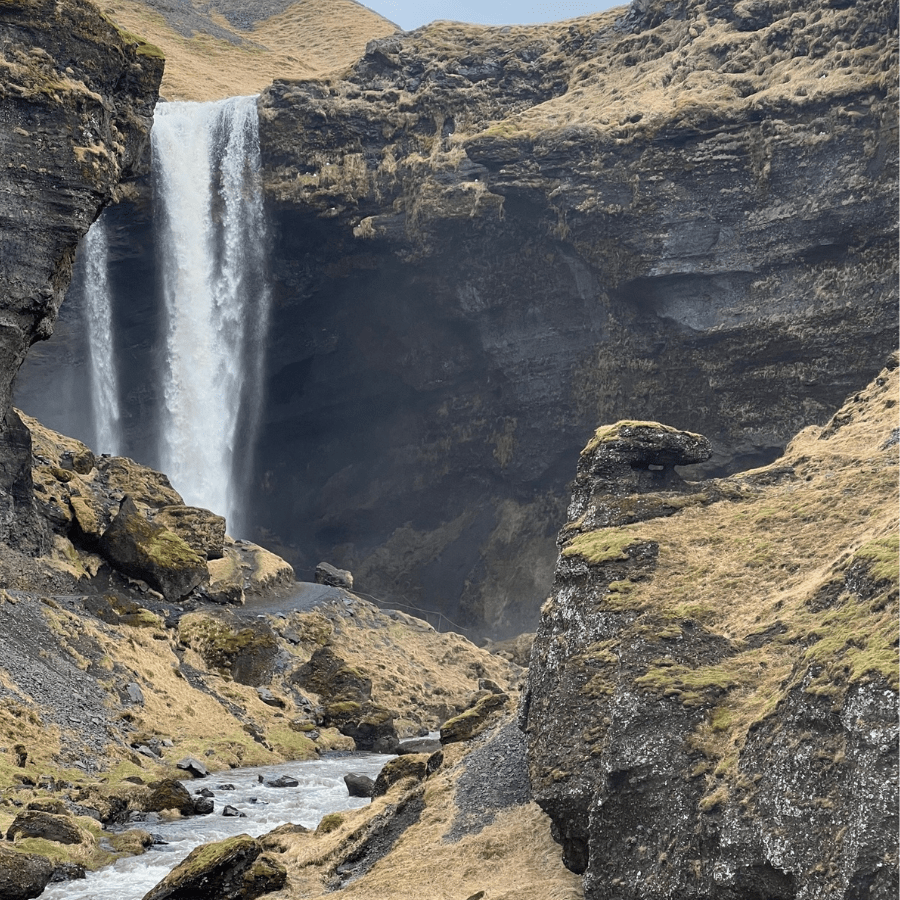
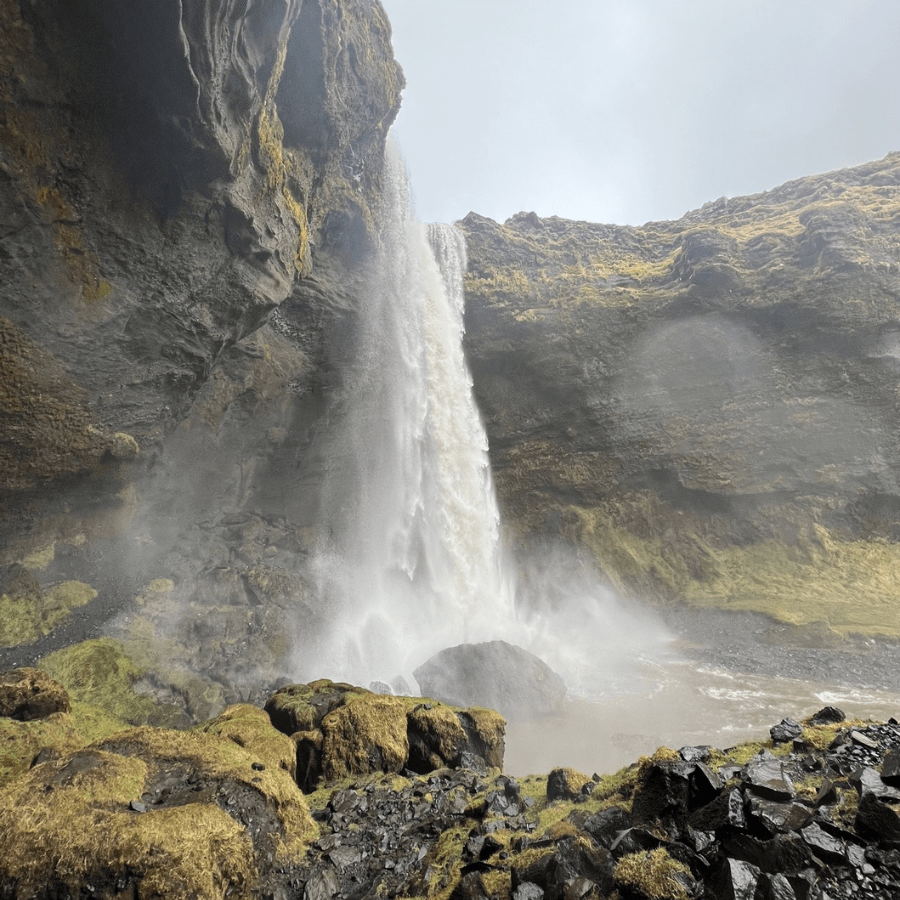
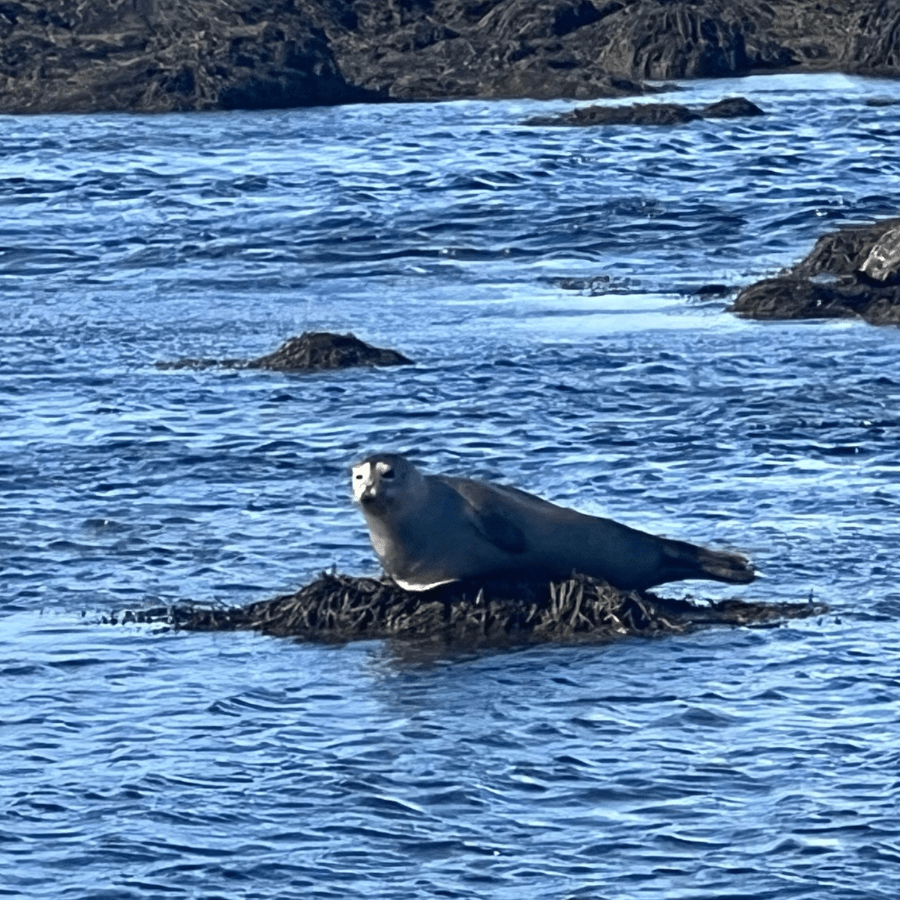
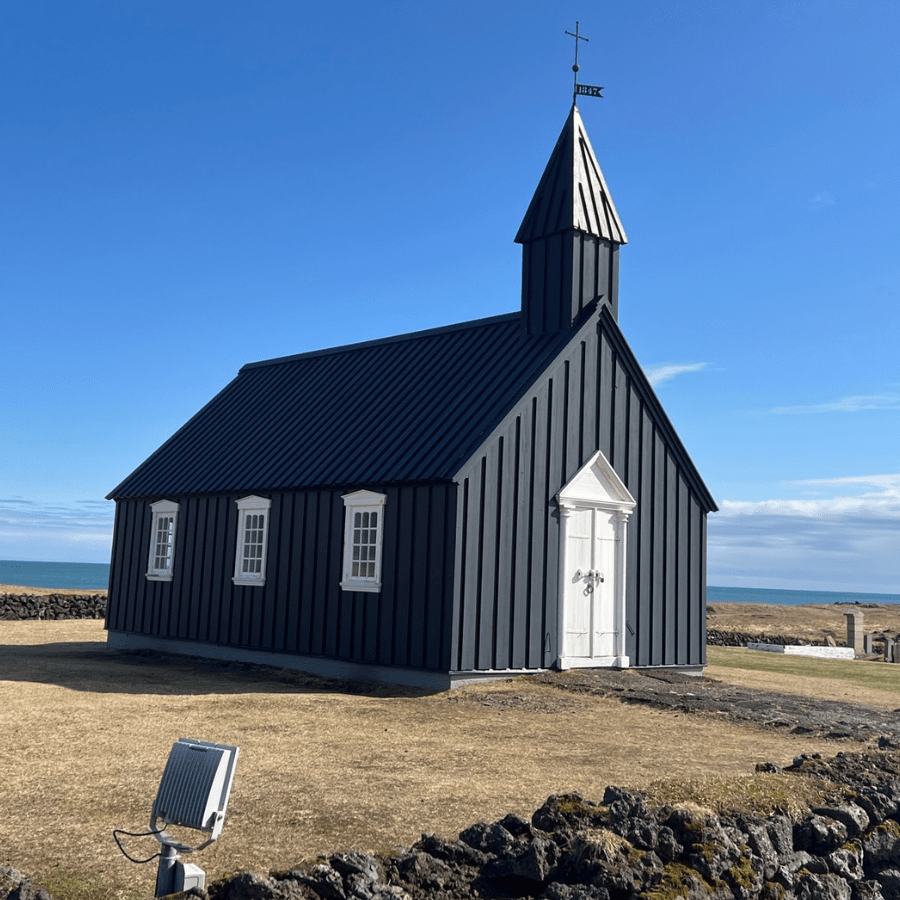
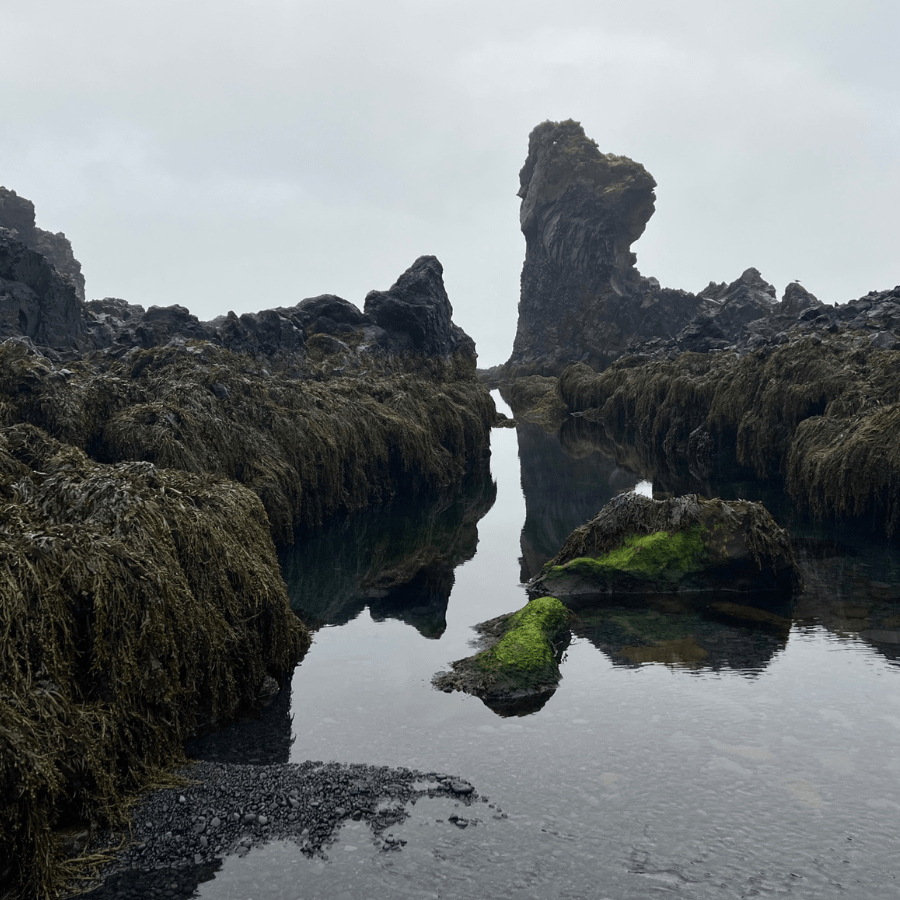

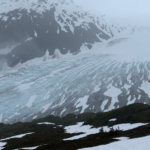
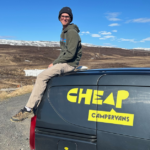
[…] Ultimate 8-Day Campervan Itinerary on Ring Road […]
[…] The Ultimate 8-Day Campervan Itinerary on Ring Road […]
[…] The Ultimate 8-Day Campervan Itinerary on Ring Road […]
[…] Not only did I try it once, but I used it in 3 countries I was visiting this year. I used Airalo in Iceland, Thailand and Japan. Airalo supports over 200 countries and […]